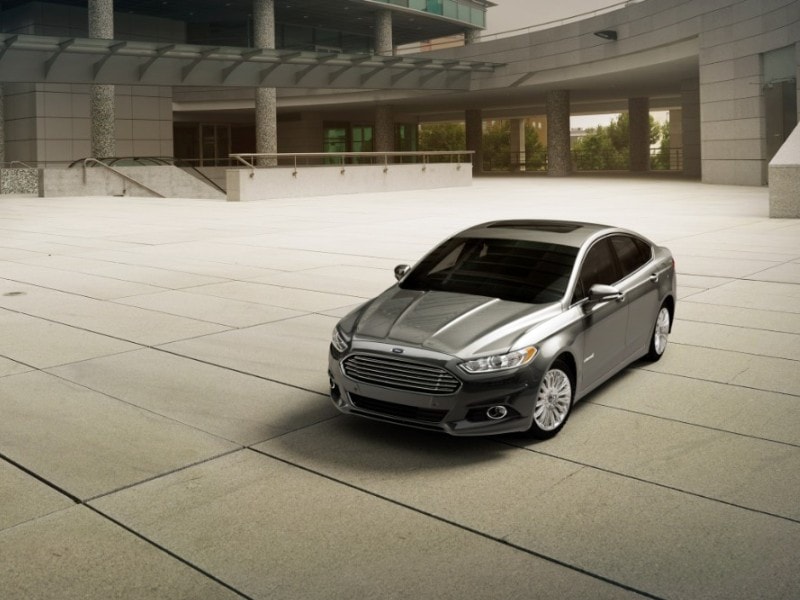Recent Articles
Popular Makes
Body Types
2015 Ford Fusion Hybrid/Fusion Energi Road Test Review
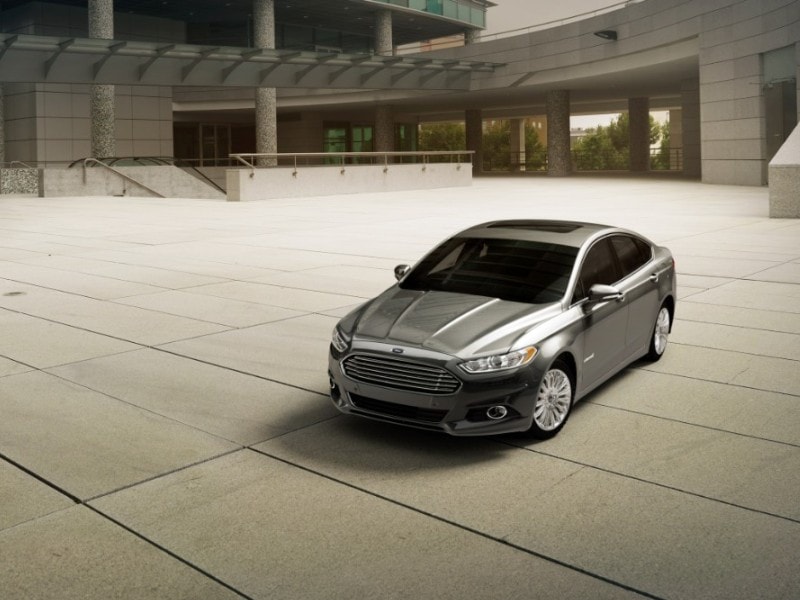
For vivid proof that the hybrid powertrain has gone mainstream, check out the 2015 Ford Fusion lineup. The mid-size sedan is offered with two different approaches to hybrid propulsion.
The Ford Fusion Hybrid works pretty much like every other hybrid out there, combining the output of an internal combustion engine with an electric motor for improved fuel economy.
The Ford Fusion Energi on the other hand, is a plug-in hybrid. Its battery pack can be charged while Fusion Energi is parked, and it has considerable range running on electric power alone.
Of course, two similar models offering different approaches to the hybrid solution, naturally begs the question; which is best?
Well, read on…
Models and Pricing
For the 2015 model year, the Ford Fusion Hybrid’s pricing starts at $25,185. The model is offered in three levels of trim. These are S, the $25,990 SE, and the $30,490 Titanium.
Standard features on Ford Fusion Hybrid S include 17-inch alloy wheels, automatic headlights, full power accessories, a rearview camera, cruise control, dual zone automatic climate control, and Ford’s Sync voice activation system. Opting for the SE package adds heated mirrors, rear seat HVAC vents, a power actuated passenger seat, and satellite radio.
Going Titanium gets you 17-inch alloy wheels, keyless entry and ignition, remote start, a 12-speaker Sony audio system, a rear spoiler, foglights, leather upholstery, heated front seats, a rear parking sensor array, the MyFord Touch electronics interface with an eight-inch touchscreen, a more advanced version of Sync, and 110V electrical outlet. It should be noted many of these features are also offered in option packages applicable to Fusion Hybrid SE
Meanwhile, the 2015 Ford Fusion Hybrid Energi is offered in but two states of trim, the $33,900 Fusion Energi SE, and the $35,730 Fusion Energi Titanium. Equipment for both trim levels basically match Fusion Hybrid.
The optional Driver Assistance package for both models offers features like blind spot monitoring, rear cross traffic alert, lane departure warning, lane keep assist, smart cruise control, and self parking.
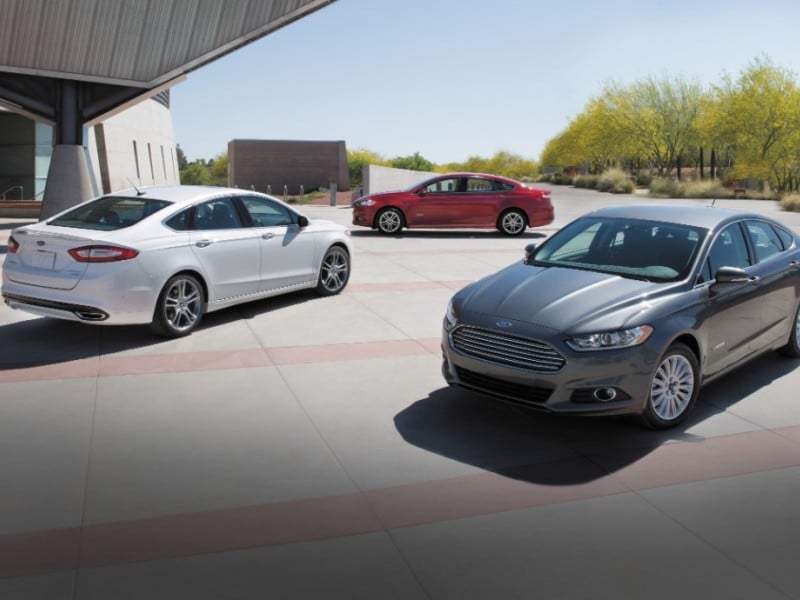
Design
Need further proof electrification has gone mainstream? Check out the styling: the Fusion Hybrid and Fusion Hybrid Energi look pretty much exactly like the standard Fusion models. Which is to say, they’re rather handsome cars.
On the other hand, many people say one reason the class-leading Prius is so successful is that you know it’s a hybrid when you look at it. Still, we believe some drivers really aren’t so caught up in having everyone know they’re doing their part to save humanity as they travel to and from Whole Foods.
With its sleek profile defying the hood/roof/trunk three-box school of design, the Fusion’s side view makes it look all of one piece, while its thin pillars and sweeping character lines add a sense of lightness and motion to the look of the car.
Inside, the Fusion offers an environment tailored to the driver, while cosseting the passengers. The instrument panel is moved forward to create a more spacious feel, while the high center console adds sportiness and enhanced storage capability.

Features and Controls
Perhaps the most polarizing feature in any modern Ford is the MyFord Touch infotainment interface.
Generating something of a love/hate relationship with users, it really is a somewhat challenging feature. There’s no denying certain comfort and convenience systems are accessed more easily using it (particularly the climate control system), but it does have a tendency to be difficult to learn and a bit slow on the uptake.
In other words, you’ll get what you want out if it—if you’re patient and persistent.
The Fusion Hybrid Energi gets some remote features accessible through the MyFord Mobile smartphone application, or via personal computer. These will allow you to keep track of the battery pack’s charge level and driving range, in addition to helping you find charging stations. It also enables you to activate the climate control system to pre-heat or cool the interior before driving the car.
Another innovative feature found on both Hybrid Fusion and standard Fusion models is self-parking capability. They locate the space, instruct the driver which transmission position to select, then place themselves into any suitably sized parking space—while the driver controls the speed of the car with the brake pedal.
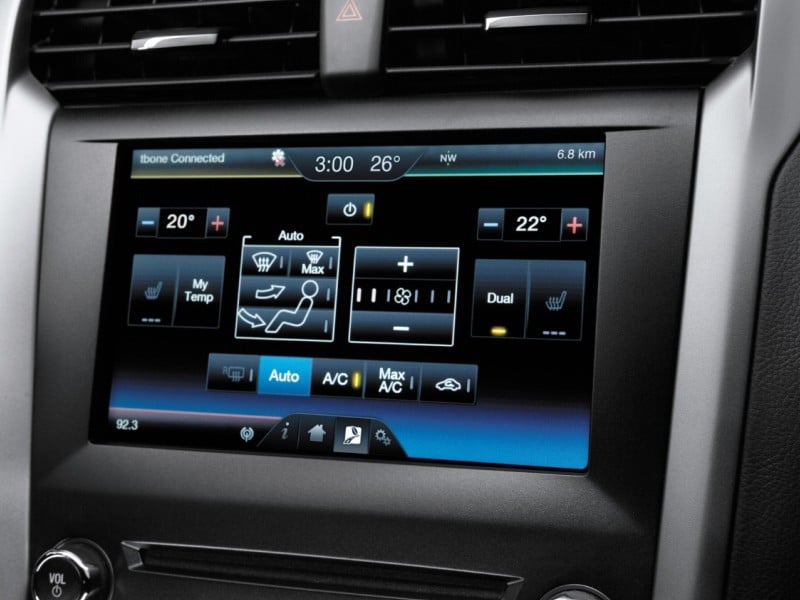
Photo by Ford
Comfort and Cargo
With the interior design working hard to provide the feel of a spacious and airy cabin environment, the electrified Fusions are both quite pleasant inside.
Further, their seats are comfortable, supportive, and easily adjustable (the front two–of course). For the driver, the view out of the steep sloping rear window can be a bit compromised, but the rear view camera helps a lot in terms of visibility.
Legroom is great up front, and adequate in the rear, in both Fusion Hybrid and Fusion Hybrid Energi; but the sleek profile we love so much from the outside, can be a bit of a hindrance inside to taller people trying to occupy the back seat.
Here, we’d be remiss if we failed to mention in both cars, you’ll trade cargo capacity for fuel economy. Trunk space is diminished considerably. The Fusion hybrid takes a bit less of a hit because its battery pack is smaller, offering 12 cubic feet, compared to the standard car’s 16. Fusion Energi makes do with 8.2 cubic feet.

Safety and Crash Test Ratings
The 2015 Ford Fusion scored the Insurance Institute of Highway Safety’s highest ranking (“Good”) in all testing except the small overlap frontal offset crash, in which it was deemed “Acceptable”. NHTSA award Fusion Five Star status—its highest ranking.
Standard safety features include ABS, traction control, stability control, a rearview camera, a full complement of airbags, and emergency crash notification.
Ford’s optional MyKey safety system will mute the radio if the car is driven without the seat belts fastened. It will also allow the car’s owner to limit the Ford’s top speed to a choice of 65, 70, 75, or 80 miles per hour—with chimes sounding at 45, 55, and 65 mph. MyKey also enables the blocking of any satellite radio stations classified as explicit.
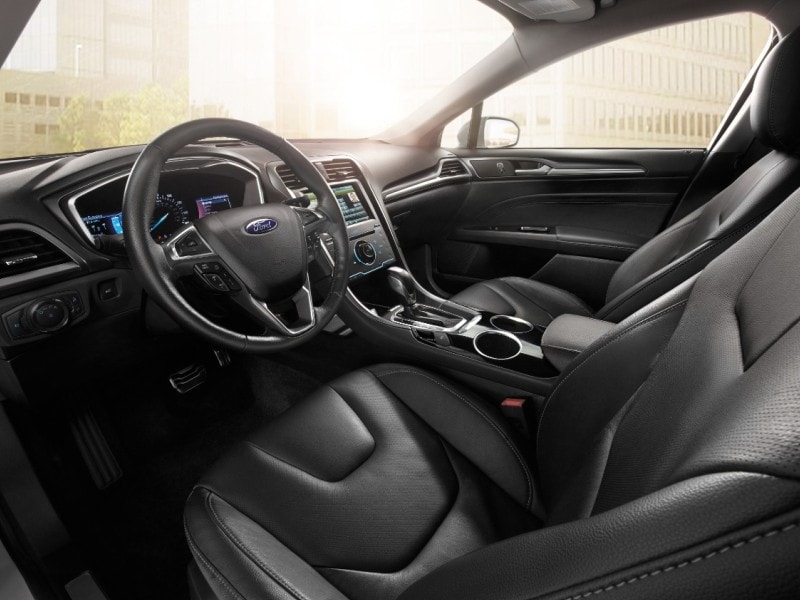
Photo by Ford
Engines/Motors and Fuel Economy
The 2015 Ford Fusion Hybrid pairs a 141-horsepower 2.0-liter inline four-cylinder engine with a 118-horsepower electric motor, which is fed power from a lithium-ion battery pack. Combined system output is 188 horsepower, fed to the front wheels through a continuously variable transmission. Fuel economy is rated at 44 miles per gallon in the city, 41 on the highway, and 42 combined.
The Fusion Hybrid Energi’s powertrain is configured largely the same, however it gets a larger battery pack and a more powerful electric motor to achieve a total system output of 195 horsepower. Further, the Fusion Energi can travel at speeds of up to 85 miles per hour—or a distance of approximately 20 miles—solely on electric power, with no intervention from the internal combustion engine. This means you can drive short distances on electric power alone, without using the gasoline engine.
A plug-in hybrid, the Energi’s battery pack can be completely recharged from near depletion in 2.5 hours using a 240V-charging source. It’ll take seven hours using regular 120V household current. The EPA says the Fusion Energi is good for 88 miles per gallon equivalent with both electric and gas power. Once the electricity plays out, you can expect the 2.0-liter with hybrid assist to return 40 mpg-city, 36-highway, and 38 overall.
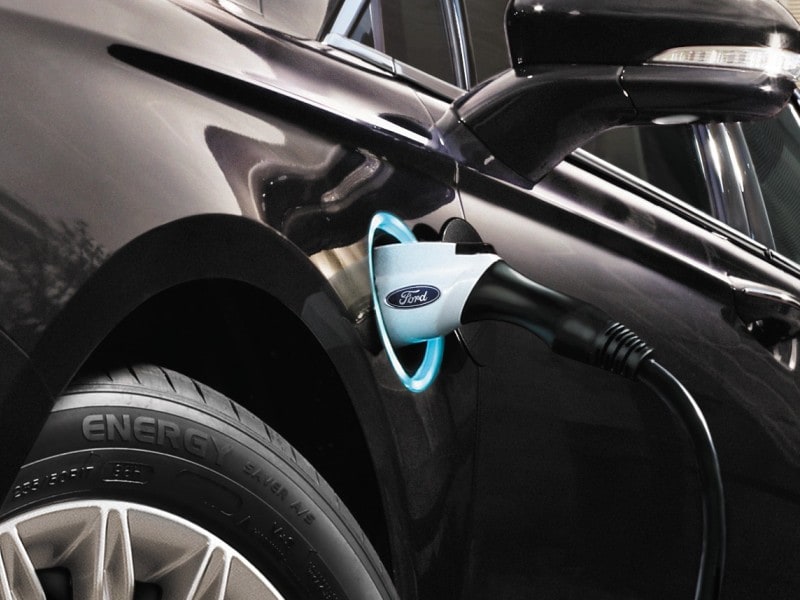
Photo by Ford
Performance
Quiet and smooth in electric operation, reasonably responsive, and acceptably agile around town, the Ford Fusion Hybrid and the Ford Fusion Hybrid Energi drive like the near-premium sedans they are. No, they won’t set your trousers on fire with their screaming acceleration, but they are more than capable of getting out of their own way—so to speak.
Fusion Energi offers an EV mode to permit driving on electric power alone, and it can be programmed to use electricity only when it can do so most efficiently. Yes, both drive differently than the standard gasoline powered Fusion (particularly the feel of the brake pedal — owing to the regeneration system in the electrified models), but what you get in return is excellent fuel economy, as well environmentally conscious motoring.
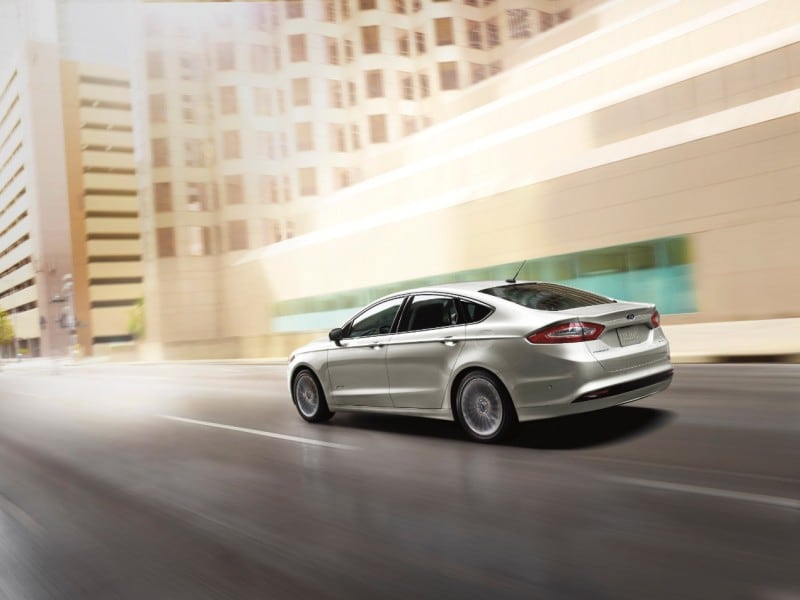
Final Thoughts
The Ford Fusion Hybrid and Ford Fusion Hybrid Energi actually make driving a mainstream hybrid fun. They really do impart a sense of driving enjoyment—even while delivering the superior fuel economy expected of gasoline/electric automobiles.
So, which is better?
If you do a lot of short runs around town or have a relatively short commute (less than 20 miles) and have ready charging station availability, Fusion Energi might do everything you need on electricity alone. However, you will pay more for this capability and you’ll give up half your trunk.
Meanwhile, the Fusion Hybrid also returns strong fuel economy and costs less.
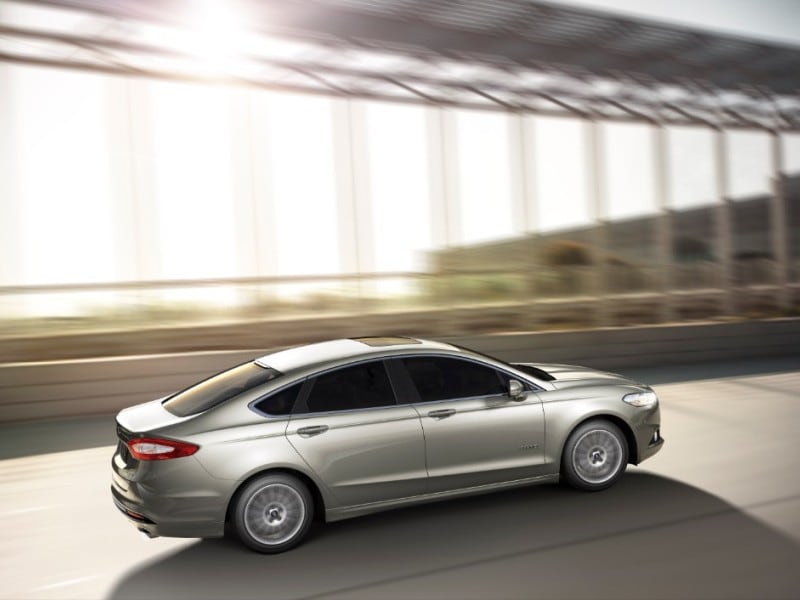
Pros and Cons
Pros: Both offer admirable fuel economy, handsome styling, a nice array of the latest techno comfort, convenience and safety features, and self parking. Fusion Energi offers potentially all-electric driving
Cons: Fusion Energi costs a lot more than the Ford Fusion Hybrid; MyFord Touch can try your patience, Energi’s smaller trunk
